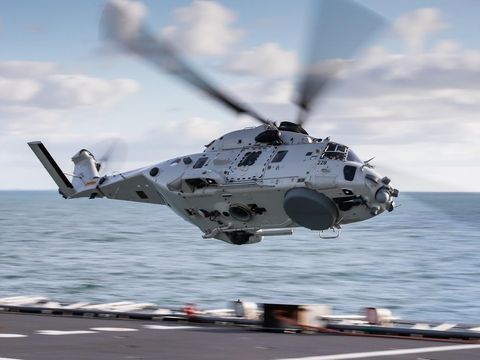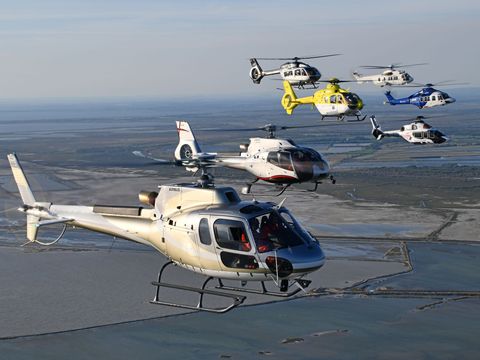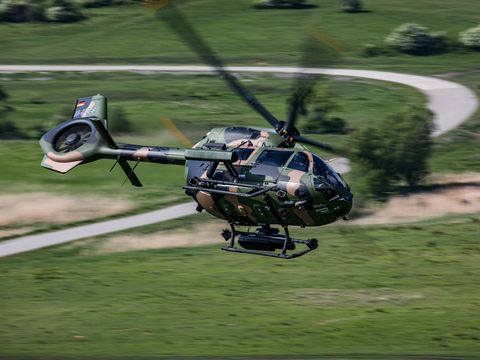NH90
The NATO standard helicopter
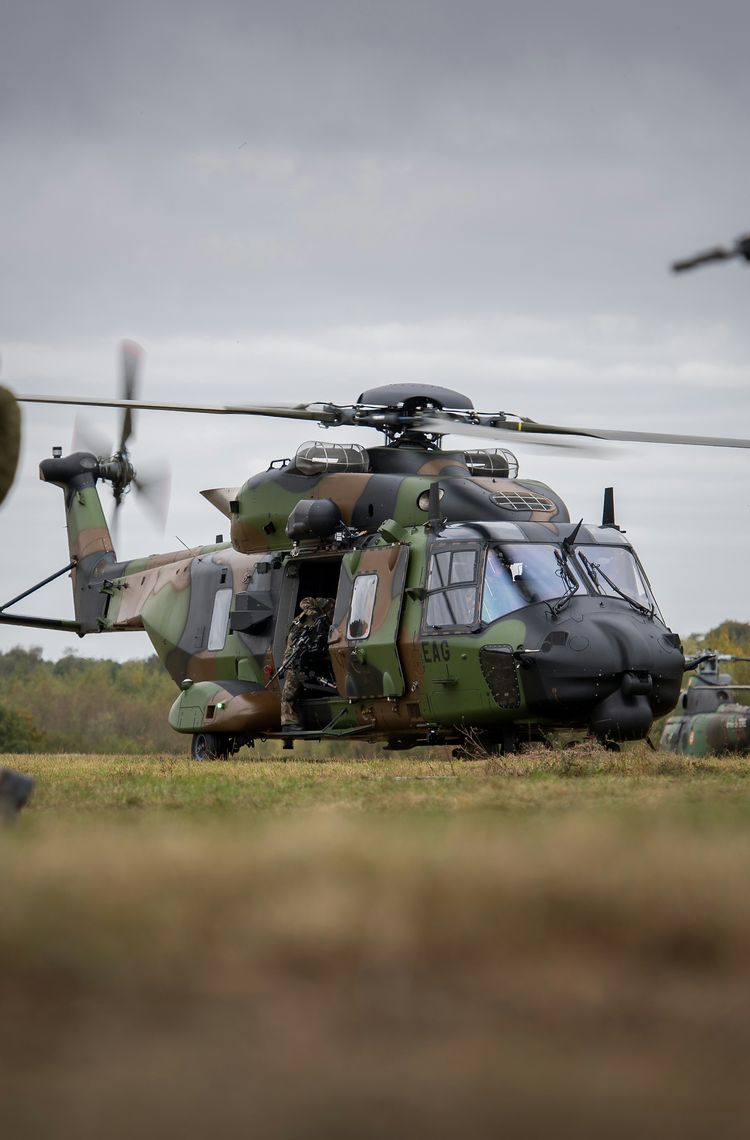
Trusted and proven
The NH90 military helicopter is a modern, multi-role rotorcraft designed to meet the most stringent NATO standards. Developed in two versions – tactical transport (TTH) and NATO frigate helicopter (NFH) – the NH90 contains a unique, fully integrated mission system for multi-role operations in the most demanding conditions over land and sea, day and night.
More than 500 NH90s have been delivered to 18 customers in 14 countries (by the end of 2023), accumulating more than 400,000 flight hours.
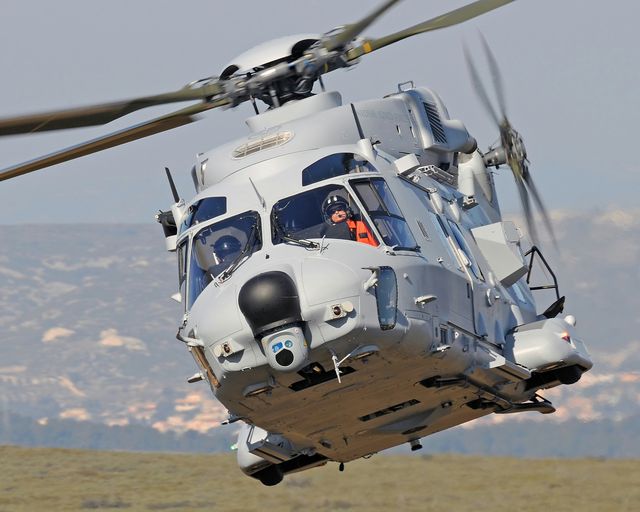
Effective, modern and innovative
The NH90 – developed by Europe’s NHIndustries partnership (Airbus Helicopters, Leonardo Helicopters, and Fokker Aerostructures) – was designed to meet NATO’s requirement for a modern, medium-sized multi-role military helicopter in both land and maritime operations.
The core vehicle for the TTH and NFH versions is a twin-engine rotorcraft incorporating innovative features such as advanced mission flight aids and a fly-by-wire control system with an advanced 4-axis autopilot, along with a full mission-oriented integrated system.
Benefitting from a modern approach to materials, the NH90’s composite fuselage has fewer parts and a lower structural weight, resulting in 30% more endurance compared to a metallic fuselage, plus increased resistance to battle damage – among other benefits. The composite rotor blades have greater fatigue strength, damage tolerance and component lifetimes, as well as improved aerodynamic performance.
Compact and versatile, it can fit into a NATO frigate hangar, and with a cabin volume large enough to carry 20 fully equipped personnel or a maritime mission system, it provides a real multi-mission capability. Its wide modular cabin, large sliding doors on each side, and rear ramp make it the most accessible military helicopter available.
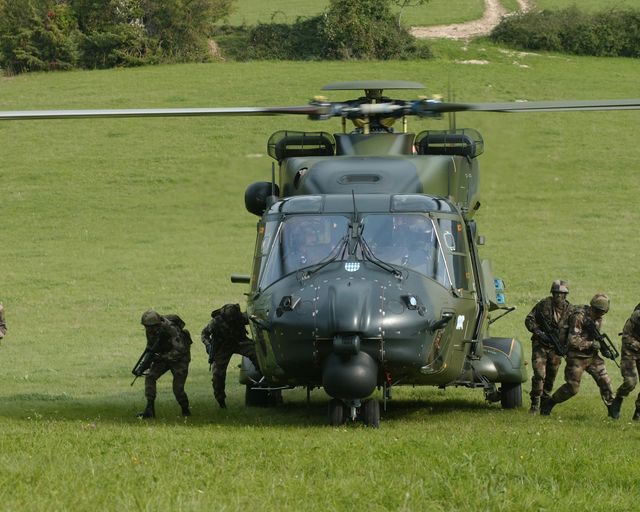
Operation survivability
Detection avoidance: The NH90 features the lowest radar signature in its class thanks to the helicopter’s diamond-shaped, full-composite airframe. In addition, infrared suppressor devices and vertical engine air intakes further contribute to lowering the NH90’s acoustic and infrared signatures.
Self-protection: The helicopter’s advanced self-protection suite is composed of laser and radar warning receivers, a missile launch detection system, and chaff/flare dispensers.
Survivability: The inherent redundancy of fly-by-wire controls (four segregated analogue/digital channels) greatly increases survivability if the NH90 is engaged by small arms fire. All systems and subsystems are redundant and segregated; while armor plating is provided for both crew and troops.
The crashworthy composite structure (which prevents heavy components from breaching the cabin) – combined with highly effective floatation gear – gives a best-in-class level of crew survivability.
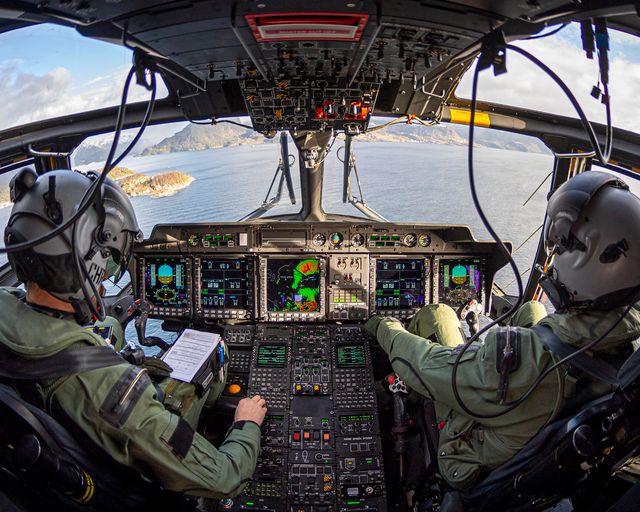
Integration, commonality and maintainability
The NH90’s integrated avionics suite and glass cockpit facilitates intuitive interaction with helicopter systems and communications suite, along with flight, navigation and mission systems. This enables effective management of the cockpit environment for mission success and safety in all operating conditions.
Highly integrated workstations and the use of data fusion increase the speed, accuracy and quantity of data that can be processed and displayed on configurable screens. This is vital for effective autonomous and joint operations in land and maritime environments.
Pilot workload is drastically reduced through the use of an optimised human-machine interface, permitting the NH90 NFH to fly naval warfare missions day and night with a crew of one pilot, one tactical coordinator in the cockpit, and one sensor operator at the cabin workstation. A configuration with two pilots and two tactical operators in the cabin also is possible.
As a common platform for all missions, the NH90’s tactical transport (TTH) and NATO frigate helicopter (NFH) versions use common systems, facilitating parallel design and simplifying their logistics support footprint.
Having one core training system for pilots and maintenance technicians, along with a core maintenance and spares system, also significantly reduces lifecycle costs.
The latest on the NH90
In the spotlight
-
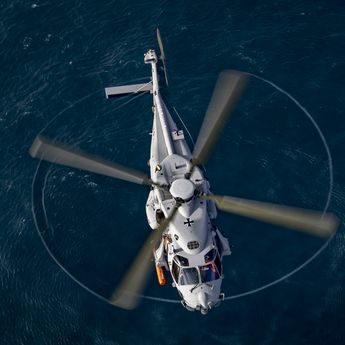
Airbus and Leonardo to launch NH90 Block 2 studies responding to a request from…
Press Release
Helicopters
Airbus Helicopters and Leonardo are to carry out an architecture study to define the basis of the NH90 long-term evolution, known as Block 2. -

Airbus delivers first two NH90 Tactical Transport Helicopters to Spanish Navy
Press Release
Helicopters
-
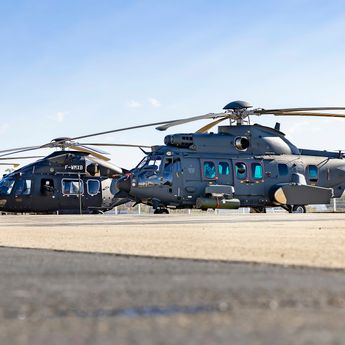
Today’s discussions: tomorrow’s revolutions
Web Story
Helicopters
-

Airbus delivers first Standard 3 configured NH90 to Spain
Press Release
Helicopters
-

Airbus helicopter rendezvous in the land of the long white cloud
Web Story
Helicopters

